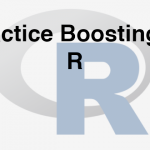
In previous section, we studied about Random Forest
In this post we will cover how boosting work and the type of boosting algorithms.
Boosting
- Boosting is one more famous ensemble method.
- Boosting uses a slightly different techniques to that of bagging.
- Boosting is a well proven theory that works really well on many of the machine learning problems like speech recognition.
- If bagging is wisdom of crowds then boosting is wisdom of crowds where each individual is given some weight based on their expertise.
- Boosting in general decreases the bias error and builds strong predictive models.
- Boosting is an iterative technique. We adjust the weight of the observation based on the previous classification.
- If an observation was classified incorrectly, it tries to increase the weight of this observation and vice versa.
Boosting Main idea
Final Classifier \(C = \sum \alpha_i c_i\)
How weighted samples are taken
Boosting Illustration
Below is the training data and their classes .We need to take a note of record numbers, they will help us in weighted sampling later.
Theory behind Boosting Algorithm
- Take the dataset
- Build a classifier \(C_m\) and find the error
- Calculate error rate of the classifier
- Error rate of \(\epsilon _m = \sum w_i I (y_i \neq C_m (x)) / \sum w_i\) = Sum of misclassification weight / sum of sample weights
- Calculate an intermediate factor called a. It analogous to accuracy rate of the model. It will be later used in weight updating. It is derived from error
- \(\alpha _m = log(1- \epsilon _m)/\epsilon _m)\)
- Update weights of each record in the sample using the a factor. The indicator function will make sure that the misclassifications are given more weight
- For i =1,2,… N
- \(W_(i+1) = w_i e^(\alpha _m I(y_i\neq C_m (x)))\)
- Renormalize so that sum of weights is 1
- For i =1,2,… N
- Repeat this model building and weight update process until we have no misclassification
- Final collation is done by voting from all the modes. While taking the votes, each model is weighted by the accuracy factor \(\alpha\)
- \(C = sign(\sum \alpha _i C_i(x))\)
Gradient Boosting
- Ada boosting
- Adaptive Boosting
- Till now we discussed Ada boosting technique. Here we give high weight to misclassified records.
- Gradient Boosting
- Similar to Ada boosting algorithm.
- The approach is same but there are slight modifications during re-weighted sampling.
- We update the weights based on misclassification rate and gradient
- Gradient boosting serves better for some class of problems like regression.
The next post is a Practice Session on Boosting.




